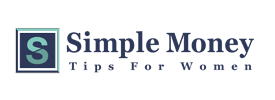
28 Apr How Do I Take Money out of My 401(k)?
When you’re strapped for cash or need money in a hurry, taking money out of your 401(k) account can seem like a good idea. However, you have to understand the early withdrawal fees and taxes you will incur—along with missing out on the tax-deferred growth in your account—if you make this decision. At the same time, there are certain situations in which you can take money out of your 401(k) without it financially breaking you.
401(k) Facts
Let’s review what a 401(k) is and how it works. A 401(k) plan is a retirement account that is established by an employer to assist employees in saving for retirement. Employees can choose to have a portion of their paychecks deposited directly into their accounts. Sometimes employers match the amounts employees put into their 401(k) accounts.
Because your 401(k) funds are usually pre taxed, if you choose to withdraw these funds before you’re 59.5 years old, you are required to pay taxes on those funds when you remove them from the account.
Additionally, because your 401(k) money is supposed to be for when you retire, the government wants to make it really unattractive to withdraw your money early. They understand human nature and the temptation to take the money out ahead of time for “needs” we may have, so they attach a 10% penalty to any funds withdrawn early.
401(k) Scenarios
Since 401(k) plans are employer-sponsored, you’ll find yourself in one of two scenarios: either you still work for the employer that has your 401(k) plan, or you don’t. Let’s take a closer look at both of these scenarios and how you would handle things depending on whether you’re still working for that employer or not.
Still employed with the company that you have your 401(k) through
The first thing you must do is speak with your company’s retirement accounts coordinator because each 401(k) plan has its own rules. It’s important that you check with your plan administrator for the specifics of your plan. Don’t assume that certain situations qualify as hardships; they may not under your particular plan.
And some companies disallow distributions while you’re still employed. While you get the facts for your plan, here are some common ways you can withdraw funds from most 401(k) plans:
Hardship Withdrawal – Some 401(k) plans allow you to withdraw funds if your circumstances qualify under their definition of “hardship.” When you make a hardship withdrawal, you can usually avoid the 10% penalty, but you will still get hit with paying taxes on the funds. Some examples of hardship situations include:
- Tuition (room and board for you, your spouse, dependents, and specific beneficiaries)
- Certain medical expenses (you, your spouse, or dependents)
- Funeral costs (parents, spouse, or dependents who have passed away)
- Costs to buy your main residence (down payment, but not mortgage payments)
- Money to repair damages to your main residence
- Money to prevent foreclosure or eviction from your main residence
In-Service Distributions – Sometimes you can take money out of your 401(k) while you are still employed with the company.
Disability – In some cases, if you are receiving disability, you can withdraw funds from your 410(k), but you’ll still be liable for the 10% early withdrawal fee and taxes if you’re under age 59.9 unless you’re on disability.
Loans – Most 401(k) plans allow you to borrow against the balance of your account. See your plan for details about how much is allowed and the specifics of how borrowing from your 401(k) plan works. Basically, you repay it just like a regular loan (often repayments are taken right out of your paycheck).
The advantages to this is that you can often get a fairly good interest rate, and you will avoid the early withdrawal and tax fees. At the same time, you must realize that when you take money out of your 401(k), those funds aren’t invested anymore to increase your retirement nest egg, and you are setting yourself back significantly. You won’t have as much in retirement savings as you would have if you had left the money in the 401(k) account.
No longer employed with the company that you have your 401(k) through
If you don’t work for the employer you have your 401(k) through, you’ll want to contact the person who oversees the 401(k) accounts through the company or call the number on your statement. Ask how you go about withdrawing or moving your 401(k) funds.
Also, understand that because you don’t work there anymore, borrowing money in the form of a loan or withdrawing based on hardship aren’t options for you. Here are your three options for your 401(k) if you are no longer employed with the company:
> Roll over your 401(k) to an IRA
> Roll over your 401(k) with your former employer to your new employer’s plan
> Withdraw funds (Remember, if you are under 59.5 years old, you will be taxed a 10% early withdrawal penalty.)
Final Thoughts
On another note, remember that a 401(k) plan isn’t the only type of retirement plan. There are many more retirement plans to choose from if your employer doesn’t happen to offer a 401(k) plan, if you want to diversify, or if you want to save more than what the employer-sponsored plan allows.
When it comes to taking money out of your 401(k), there can be serious financial repercussions, including penalties, fees, and less money to retire on in the future. For example, if you withdraw $10,000, you will only receive about $6,300 after all taxes and penalties are settled. As you can see, taking a distribution from your retirement account should be a last resort.
To thank you for reading, we’d like to offer you our FREE Just in Case file! This document will help you prepare for the unexpected. The Just in Case file assists you in organizing all of your important accounts and personal information to ensure your family is taken care of just in case something happens to you.

